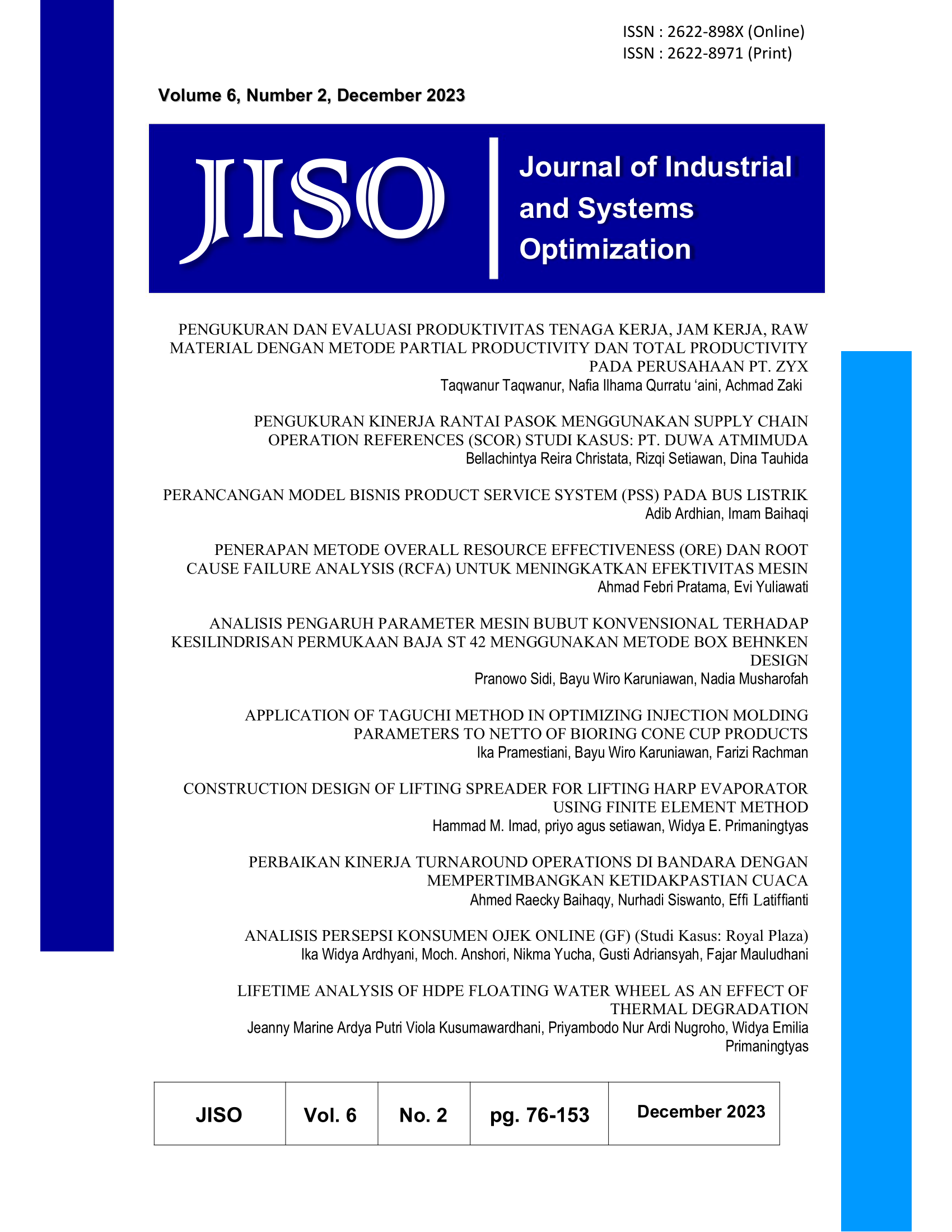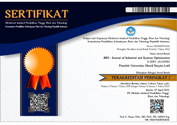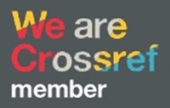CONSTRUCTION DESIGN OF LIFTING SPREADER FOR LIFTING HARP EVAPORATOR USING FINITE ELEMENT METHOD
DOI:
https://doi.org/10.51804/jiso.v6i2.124-130Keywords:
Finite Element Method, Lifting Appliances, HRSGAbstract
A company engaged in EPCC is working on a project to replace the evaporator tube element in an HRSG. Lifting equipment is needed for the element lifting process which includes vertical and horizontal lifting processes, the design and calculation of components on the spreader bar must be calculated properly, the spreader bar components include the main profile, sling, shackle & padeye. This is done so that there are no fatal work accidents for either the worker, the material being lifted, the lift plane or the spreader bar. Calculation of the components of the lifting aid is carried out to determine the dimensions of the components to be used, then also calculate the von mises stress that occurs. This study aims to streamline the lifting equipment which previously amounted to 2 spreader bars to 1 spreader bar without reducing the strength of the structure. The results of the calculation of von mises stress that occurred in the vertical position amounted to 68.89 Mpa (FEM Validation = 29.16 Mpa), with an allowable stress of 83.3 Mpa, while in the horizontal position the resulting von mises stress was 30.92 Mpa (FEM = 17.12 Mpa).
Sebuah perusahaan yang bergerak di bidang EPCC sedang mengerjakan proyek penggantian elemen tube evaporator pada sebuah HRSG. Alat angkat dibutuhkan untuk proses pengangkatan elemen yang meliputi proses pengangkatan secara vertikal dan horizontal, desain dan perhitungan komponen pada spreader bar harus diperhitungkan dengan baik, komponen spreader bar meliputi main profile, sling, shackle & padeye. Hal ini dilakukan agar tidak terjadi kecelakaan kerja yang fatal baik bagi pekerja, material yang diangkat, pesawat angkat maupun spreader bar. Perhitungan komponen-komponen alat bantu angkat dilakukan untuk mengetahui dimensi komponen yang akan digunakan, kemudian juga menghitung tegangan von mises yang terjadi. Penelitian ini bertujuan untuk merampingkan alat bantu angkat yang sebelumnya berjumlah 2 spreader bar menjadi 1 spreader bar tanpa mengurangi kekuatan struktur. Hasil perhitungan von mises stress yang terjadi pada posisi vertikal sebesar 68.89 Mpa (FEM Validasi = 29.16 Mpa), dengan tegangan ijin sebesar 83.3 Mpa, sedangkan pada posisi horisontal von mises stress yang terjadi sebesar 30.92 Mpa (FEM = 17.12 Mpa).
References
American National Standart Institute. (2005). AISC: Specification for Structural Steel Building.Chicago: AISC Inc.
Devi, L. I. P. S. Asmara, P. Sidi. (2022) “Perancangan Pillar Slewing Jib Crane SWl 2 Ton dan Span 5 Meter,” Proceeding 6th Conference on Design and Manufacture Engineering and its Application,.
Ferdinand, B. (2012), Mechanics of Materials, New York: Mcgraw-Hill.
Juniani, A., Singgih, M., & Karningsih, P. (2022). Proposed Framework of Product Redesign Need Assessment based on Customer Requirement, Complaint and Failure Analysis. 12th Annual International Conference on Industrial Engineering and Operations Management. https://doi.org/https://doi.org/10.46254/AN12.20220115.
Ningtyas, L. R. M. Hakam, W. E. Primaningtyas. (2023). Analisis Tegangan dan Besar Defleksi pada Wall Jib Crane Kapasitas SWL 1 Ton Menggunakan Metode Elemen Hingga (Studi Kasus PT. Adiluhung Sarasanegara Indonesia), Proceeding 6th Conference on Design and Manufacture Engineering and its Application.
Rudenko, N. (1966). Mesin Pengangkat. Jakarta: Erlangga.
Sectio M. Y. A. (2022) Studi Eksperimen Penganggu Di Depan Returning Blade Terhadap Performa Turbin Angin Savonius Dengan Penambahan Overlap Ratio. Diploma Thesis. PPNS Surabaya.
Setiawan, P. A. M. Santoso, R. Indarti, N. Ariwiyono, T. Yuwono, and W. A. Widodo. (2021). An Experimental Study of the Savonius Water Current Turbine by means of Myring Equation for n = 1. J. Phys. Conf. Ser., vol. 1764, no. 1. Doi: 10.1088/1742-6596/1764/1/012194.
Setiawan, P. A. R. Indarti, N. Ariwiyono, T. Yuwono, and W. A. Widodo. (2021). An Experimental Study of Overlap Ratio Effect to Savonius water Current Turbine by using Myring Equation for n=1,” J. Phys. Conf. Ser., vol. 1764, no. 1, doi: 10.1088/1742-6596/1764/1/012198.
Setiawan, T. Yuwono, and W. Widodo. (2019). Flow Analysis of a Circular Cylinder on the Savonius Hydrokinetic Turbine Performance Placed the Side of Advancing Blade. Int. J. Mech. Mechatronics Eng. IJMME-IJENS, vol. 19, no. 06, p. 41
Setiawan and T. Yuwono. (2018) “The Effect of Inner Fan Blade Angle to The Ventilation Rate of The Turbine Ventilator,” J. Rekayasa Mesin, vol. 9, no. 3, pp. 227–233. doi: 10.21776/ub.jrm.2018.009.03.10.
Setiawan, T. Yuwono, and W. A. Widodo. (2021) Flow visualization analysis on the vertical axis Savonius water turbine by placing a cylinder in front of returning by varying stagger angle. J. Phys. Conf. Ser., vol. 1764, no. 1. doi: 10.1088/1742-6596/1764/1/012203.
Subekti A. Setiawan PA, Bachtiar. (2020). A numerical study of the effect of a single cylinder and plate deflector toward the Savonius wind turbine performance. J. Phys. Conf. Ser., vol. 1477, no. 5. doi: 10.1088/1742-6596/1477/5/052010.
Setiawan, P. A. T. Yuwono, and W. A. Widodo. (2019) Numerical Study of the Stagger Angle Effect of a Circular Cylinder Installed in front of Returning Blade Toward the Vertical Axis Savonius Water Turbine Performance. J. Phys. Conf. Ser., vol. 1179, no. 1, doi: 10.1088/1742-6596/1179/1/012107.
Yuqa, O. H., Setiawan PA., Ariwiyono N. (2019). Studi Numerik Pengaruh Variasi Sudut Stagger Silinder Sirkular Pada Sisi Advancing Blade Terhadap Performa Turbin Air Savonius Tipe Myring. Proceeding 2nd Conference on Marine Engineering and Its Application. pp. 2–7.
Zhang, L., Chu, X., & Xue, D. (2019). Identification of the to-be-improved product features based on online reviews for product redesign. International Journal of Production Research, 57(8), 2464–2479. https://doi.org/10.1080/00207543.2018.1521019
Downloads
Published
Issue
Section
License
Copyright (c) 2023 JISO : Journal of Industrial and Systems Optimization

This work is licensed under a Creative Commons Attribution-ShareAlike 4.0 International License.
With the receipt of the article by JISO Editorial Board and the decision to be published, the copyright regarding the article will be transferred to JISO. The copyright transfer form can be downloaded here.
JISO has the right to multiply and distribute the article and every author is not allowed to publish the same article that was published in this journal.
JISO is licensed under a Creative Commons Attribution-ShareAlike 4.0 International License.
Under the following terms:
Attribution — You must give appropriate credit, provide a link to the license, and indicate if changes were made. You may do so in any reasonable manner, but not in any way that suggests the licensor endorses you or your use.
ShareAlike — If you remix, transform, or build upon the material, you must distribute your contributions under the same license as the original.














